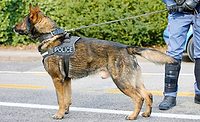What’s Changed in Open-Air Venue Security?

Following the Las Vegas shooting – the deadliest shooting in modern U.S. history – new concerns emerge regarding the security programs required to protect fans, performers, and staff at open-air sports and entertainment venues. In response to this tragedy, which many consider a “watershed moment,” we’ll undoubtedly see a renewed focus on high-consequence threat protection and a re-evaluation of the specific layered security methods required for open-air sites.
The truth is the Las Vegas attack represents just one out of many potential threat scenarios. While it exemplifies a growing threat, the circumstances surrounding the Route 91 Harvest Festival were unique. In fact, most open-air concert and event sites are not in areas subject to this same type of sniper threat. Before focusing on the unique risk that the Vegas attack revealed, it is crucial to shore up the nuts and bolts of event security. Venues should take this opportunity to assess the primary areas of vulnerability and focus on the reasonable steps necessary to reduce risk. Where is an attack more likely? What is the most likely method? How can we best detect, disrupt and deter a potential attack?
While every venue is unique, let’s look at just three primary risk considerations for open-air event environments. Shoring up these basics will substantially strengthen an overarching security posture.
Vehicle Ramming: Any venue where patrons gather en mass to queue or attend faces the increased possibility of vehicle ramming attacks, a trending terrorist tactic that requires virtually no training, skill or preparation time. It’s easy to obtain a vehicle and use it as a weapon to target large public gatherings. To combat this growing risk, it is critical that a venue’s security team evaluate its current perimeter protection practices. Venues must give strict attention to traffic management and crowd control, and separate vehicles from people throughout the footprint of the site – not just within the facility itself. Areas of focus must include parking lots and other parking structures, and designated tailgating or “fan experience” areas.
Explosive Devices in the Perimeter: The Person Borne IED (PBIED) has become a prevalent threat in this type of environment. Most venues have screening measures in place at entrances, but the threat beyond the venue perimeter is easy to overlook. It is important to extend the security zone beyond the queue lines on ingress and throughout egress until the crowd dissipates. Venues should establish a secondary perimeter and deploy the right explosive detection tools. Qualified Explosive Detection Canine (EDC) teams are trained to detect explosive odors emanating from individuals carrying or wearing explosive devices. EDC teams are one component of an effective layered security plan. They are a critical, unobtrusive and versatile tool to address this threat in populated areas not suitable for individual screening.
Carried Weapons and Explosives: It’s imperative that venue security operations consider the threat of weapons or explosives carried into the event, as well as crowded, proximate areas like parking lots. The risk presented by contraband items is significant. Venues should extend carry restrictions through the secondary perimeter by way of a clear bag policy. Sports leagues, such as the NFL, and other major event venues, have begun to adopt this strategy. Establishing this rule and enforcing it from the secondary perimeter in, allows for a more efficient and effective screening process, securing your venue and minimizing any burden to fans or personnel.
A Robust Security Program Addresses a Complete Timeline of Events. All too often, venues have thorough security measures in place on event days, but not in the days leading up to an event. This is a big miss. All the hustle of activity, deliveries and personnel preparing for an event can create vulnerabilities. A hostile actor might gain access to the event area through an unsecured loading dock or access point in the days leading up to a show and hide a firearm to be retrieved later, or plant an explosive device with a timer. Security cannot be lax on the days prior to an event. Robust measures must be implemented consistently and throughout the timeline.
The reality is that the basic nuts and bolts of event security should never be taken for granted; they must be reviewed and updated regularly to keep pace with the newest tactics and tradecraft of hostile actors. While it’s true that open-air venues carry their own set of inherent security challenges and the Las Vegas shooting reminds us that we face an evolving threat, it is important to maintain focus on areas where you can take reasonable steps to prevent loss of life and facility damage.
Looking for a reprint of this article?
From high-res PDFs to custom plaques, order your copy today!





